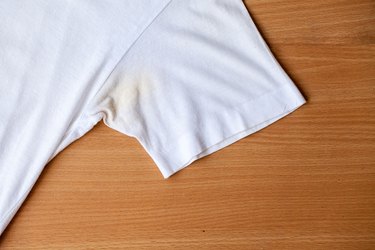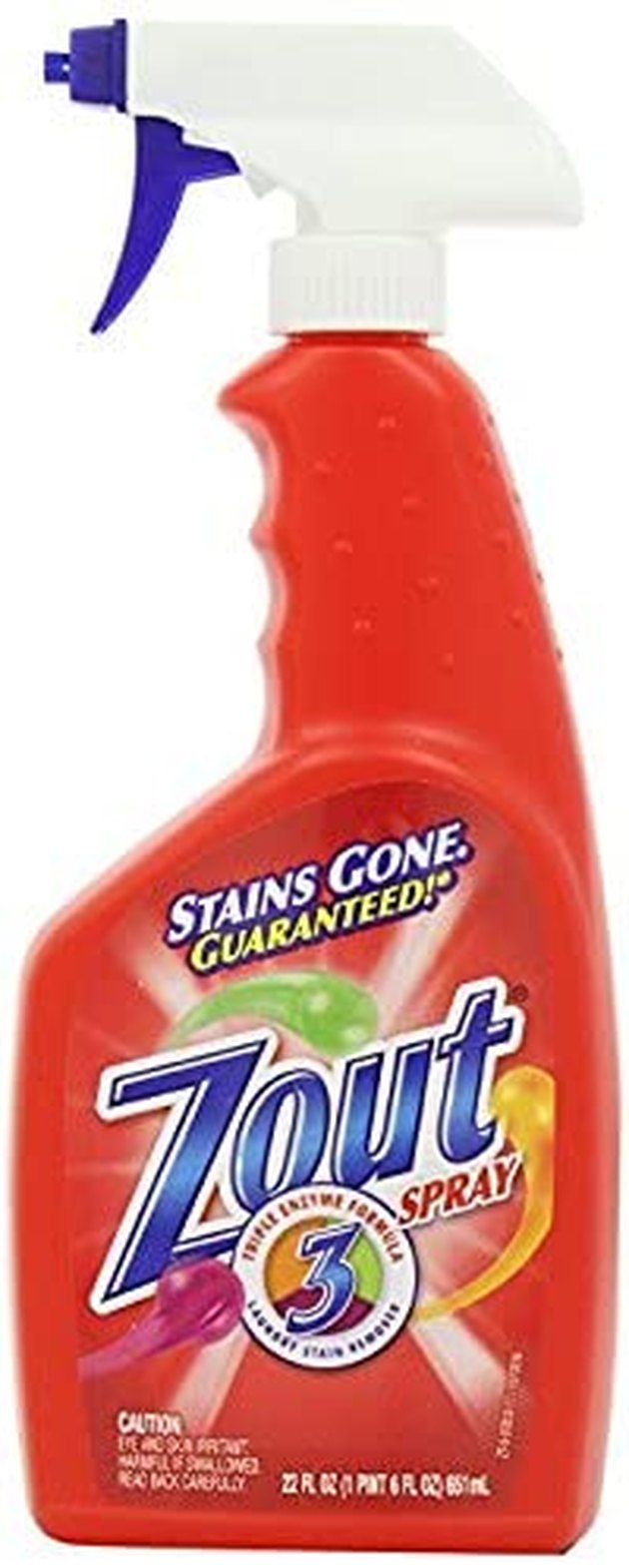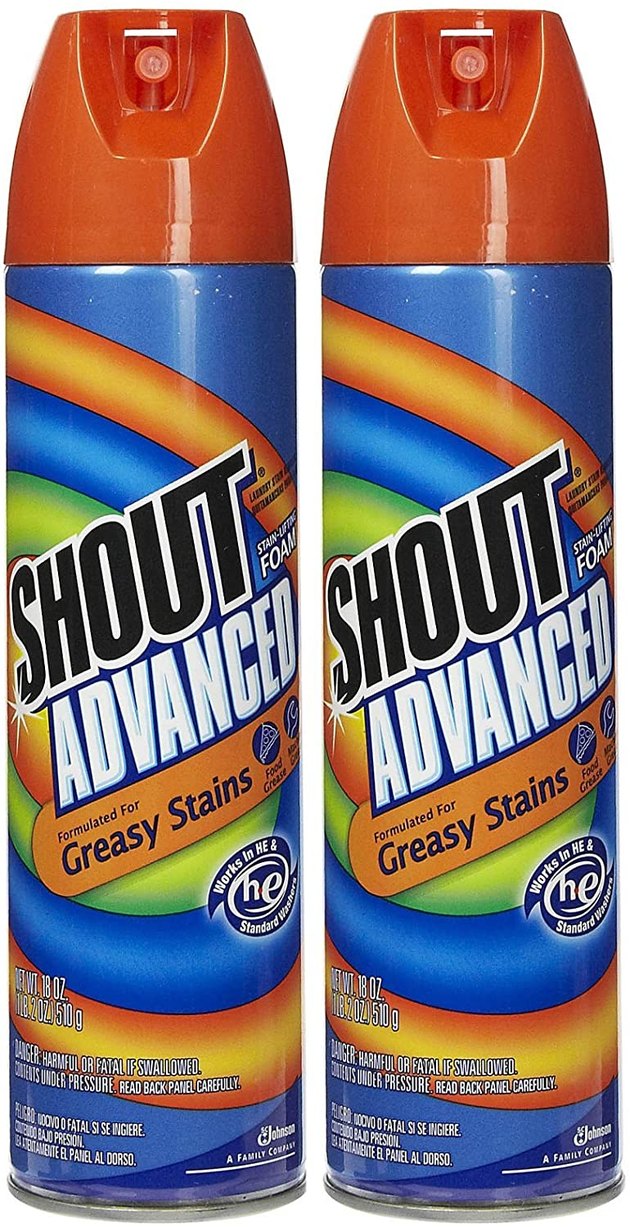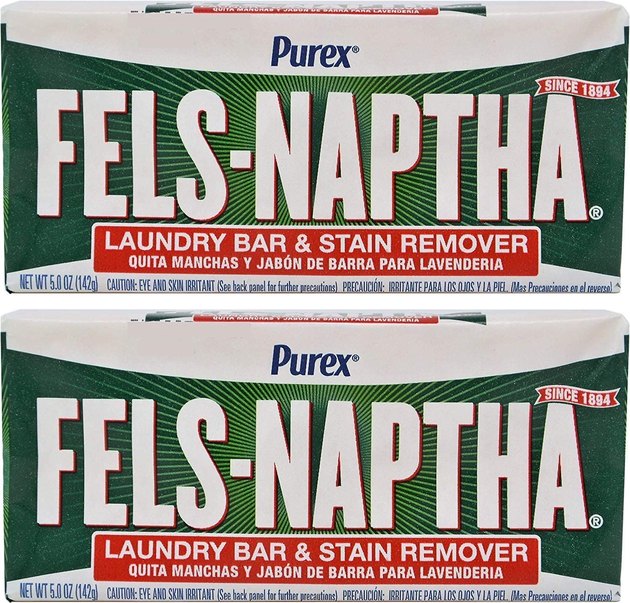
Yellow sweat stains on white clothes and white deodorant stains on dark fabrics are anything but attractive — especially if you have any odor lingering in the material. Since you can't help but sweat, you'll need to find a reliable armpit stain remover to keep your clothes looking and smelling their best.
We asked the experts the best ways to remove antiperspirant and underarm stains from your clothes, including both home remedies and commercial stain removers. With the right cleaning method, you can go back to raising your arms to ask questions, hail cabs, and wave to friends without worrying about embarrassing yellow armpit stains or white deodorant streaks.
Video of the Day
Video of the Day
Meet the Experts
- Terri Smith, founder and creator of Freshen Up
- Hugo Guerrero, a certified house cleaning technician at Mattressive
Why Do Armpits Stain and Stink?
The science behind pit stains and odors is surprisingly fascinating and complex. Armpits are home to a high concentration of apocrine sweat glands that open into hair follicles, whereas the rest of the body mostly has what are called eccrine sweat glands that open directly onto the skin's surface. Apocrine glands create a thicker kind of sweat than the eccrine glands. While eccrine sweat is made mostly from water with a few other chemicals, including salt, potassium, urea, and ammonia, sweat from apocrine glands also contains fats and proteins.
On its own, sweat is clear and odorless. Unfortunately, the bacteria found in the warm, wet confines of your armpit break down the proteins and fats in sweat from apocrine glands and produce new compounds that can discolor your clothes and make them stink. Since most people don't want to be stinky, they typically apply deodorant to cover up these odors. Unfortunately, the ingredients found in many deodorants can further discolor your clothing. The aluminum chloride in most antiperspirants reacts with the protein in sweat to create crusty yellow stains.
Terri Smith, founder and creator of Freshen Up underarm products, which offers a line of natural underarm products, tells Hunker, "Some fragrances in deodorants can cause discoloration on clothing, particularly on light-colored fabrics." She says that propylene glycol, commonly used as a humectant in deodorants (a substance used to reduce moisture levels), can also cause oil stains on clothing, while the antimicrobial agent triclosan can cause yellowing. Oddly, staining from antiperspirants is a little unpredictable. "It may not occur in all cases and can depend on various factors, such as the type of fabric, the individual using the deodorant, and other related factors," she says.
To make matters worse, deodorant itself can leave behind white marks that will show on dark-colored clothing that would otherwise be too dark to show the yellow stains caused by sweat.
"The type of fabric also plays a role in the formation of sweat stains," says Hugo Guerrero, a certified house cleaning technician at Mattressive. "Synthetic fabrics, like polyester and nylon, tend to trap sweat and bacteria against the skin, leading to more staining and odor compared to natural fabrics, like cotton, which can absorb sweat more easily."
Researchers from the University of Ghent in Belgium have even discovered that sweaty synthetic fabrics grow different types of bacteria than natural materials. Sweat-drenched polyester workout wear provides a welcome home for stinky Micrococcus bacteria, which simply doesn't grow on cotton materials.
Want to Avoid Armpit Stains?
The best way to eliminate yellowy pit stains is to avoid getting them in the first place. “To prevent sweat stains,” says Guerrero, “it's recommended to wear breathable, moisture-wicking fabrics and to avoid antiperspirants that contain aluminum, which can contribute to staining.”
How to Remove Pit Stains From Clothing
The best thing you can do to get rid of deodorant and sweat stains is to wash your clothes with regular laundry detergent as soon as you take them off so you can remove sweat, bacteria, and deodorant before they set into the fabric. Washing your clothes right after sweating in them is especially important if your outfit was worn during physical activity or in warm environments, says Guerrero.
Once a stain has set in, however, you'll need to turn to a homemade or commercial armpit stain remover. Whatever you do, avoid using chlorine bleach, as it can make protein stains like those caused by sweat turn even more yellow.
Laundry Pretreatment Products
Realistically, most people aren't going to wash their sweaty clothes the second they strip them off, but the longer you leave them sitting around, the more discoloration will occur. If you can't get your clothes in the washing machine right away, the next best thing to do is to pretreat them with a product that works well on protein-based stains. Guerrero recommends applying one of the following products to the affected area at least five to 10 minutes before placing the items in the washer:
This product is designed specifically for protein-based stains, making it a perfect armpit stain remover.
Made to tackle tough stains, this laundry stain remover is excellent at removing sweat marks.
This bar soap is ideal for pretreating stains. Just rub it directly on the fabric before washing.
Lemon Juice
The citric acid from lemon juice has natural bleaching properties, but unlike bleach, it won't cause protein stains to set in. However, lemon juice will still fade dark and bright-colored clothes, so only use this method on light clothing. To clean a white shirt with lemon juice, apply the juice to the stain and let it sit in the sun for several hours before laundering as usual.
Hydrogen Peroxide
Guerrero says, "Hydrogen peroxide can help to remove both the stain and any odor associated with sweat stains." This home remedy is color-safe. Mix equal parts water and hydrogen peroxide and then apply the solution to the sweat stain. Let it sit for 30 minutes and then rinse with cold water and wash the shirt as usual.
Stain-Fighting Detergent
With the right detergent, you may be able to wash away the stain without any extra steps. Guerrero recommends Persil ProClean Stain Fighter, which is designed to remove tough stains. Use it the same way you would use any other liquid laundry detergent.
Laundry Boosters
If you don't think your regular detergent will do the trick but you don't want to take the time to pretreat the garment, try adding a laundry booster to the wash. Oxygen bleaches are nonchlorine bleaches that use enzymes to effectively break down and remove protein stains. Add a scoop to your laundry following package directions and see if it looks better after you remove the clothing from the wash.
Oxygen Bleach Soak
If the stain doesn't come out after trying other methods, try soaking your clothing in an oxygen bleach solution before rewashing:
- Clean your sink thoroughly and fill it with hot water.
- Then, add the amount of oxygen bleach you would use in a typical wash cycle and let the powder dissolve.
- Check your clothing's care label to see what water temperature is safe for the fabric and then put the item in the water, swish it around, and let it soak overnight before washing as usual.
- If the antiperspirant stains made the material stiff, try scrubbing the fabric with a laundry scrub brush or an old toothbrush.
Tip
While most of the methods above also work for removing white deodorant stains on dark clothing, you can also try rubbing the marks with a dryer sheet, baby wipe, paper towel, sock, or nylon stocking. The friction from these items can lift deodorant residue from clothing. Rub the item in a circular motion against the white marks and then launder as usual. You can even use this method to eliminate deodorant streaks while on the go by rubbing your clothes with a napkin or spare piece of clothing.
How to Remove Body Odor From Clothes
Even if your clothes look spotless, you don't want to walk around in smelly clothes. While removing the stains from cotton will usually remove the odor as well, that's not always the case when it comes to synthetic materials. To ensure you get the sweat smell out of sweaty synthetic fabrics, wash your clothes as soon as possible on the highest water temperature that's safe for the material. When trying to eliminate odors, Smith suggests that you avoid using fabric softeners, as they can trap odor-causing bacteria in the fabric.
If any smells remain after washing your clothes, use the hydrogen peroxide method above to remove the odors. Alternatively, apply a paste made from equal parts salt and lemon juice to the affected area. Let it sit for 30 minutes before rinsing with cold water and then wash as usual. The salt can help absorb the moisture and odor from the sweat, says Guererro, while the lemon will bleach out stains and add a refreshing citrus smell.


